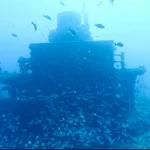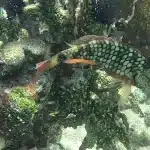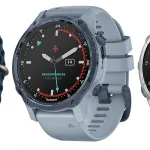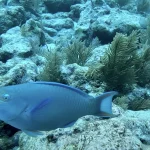Unlock Your Underwater Adventure
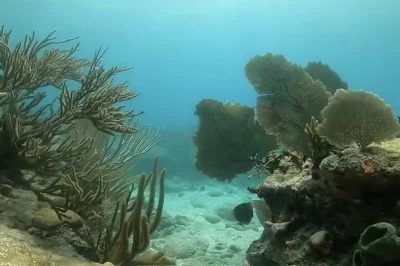
Table of Contents
- Unlock Your Underwater Adventure
- Breaking Down the PADI Certification Process
- Common Misconceptions About Diving Safety
- Avoiding Pitfalls: Mistakes New Divers Make
- Why Key West is the Perfect Certification Destination
- Dive into the Future: Trends in Scuba Diving Certifications
- The Numbers Behind Key West’s Diving Spots
- Plan Your Dive: Essential Gear and Tips
Introduction
Transform your surface curiosity into undersea mastery with Key West’s accelerated path to PADI certification. Whether you’re a seasoned snorkeler or a complete newbie to the underwater world, this guide will show you how to make the most of your scuba diving adventure in the beautiful waters of Key West. Learn the essential steps, uncover common myths, compare options, and find the perfect diving experience tailored just for you.
Unlock Your Underwater Adventure
The PADI Open Water Diver certification process in Key West follows a structured approach combining eLearning, confined water training, and open-water dives. Here’s an overview of the key components:
eLearning Phase
Students complete online academic modules remotely, covering foundational principles of diving, safety protocols, and equipment usage. This eliminates classroom time, allowing students to dedicate their Key West visit to practical training.
Confined Water Training
Morning pool sessions focus on mastering 24 core scuba skills in a controlled environment:
- Equipment handling: Assembly, donning, and disassembly of gear
- Safety procedures: Predive safety checks (BWRAF), regulator recovery, and mask-clearing exercises
- Buoyancy control: Hovering, neutral buoyancy, and emergency ascents using low-pressure inflation
- Emergency scenarios: Alternate air source use, free-flow regulator breathing, and underwater swims without masks
Most programs include gear rentals, so students don’t need personal equipment.
Open Water Dives
After confined water training, participants apply skills in natural settings such as coral reefs or deeper Florida Keys waters. Open-water dives reinforce:
- Buoyancy management in varied conditions
- Navigation skills and teamwork
- Emergency protocols practised in real environments
Successful completion awards a PADI Open Water Diver certification, recognised globally for scuba diving.
Key Dive Centres
Popular PADI-certified operators in Key West include:
- SNUBA Key West: Offers flexible scheduling and an 8-week extended training option.
- Southpoint Divers: A PADI 5 STAR Dive Centre with experienced instructors.
- Key West Dive Centre: Provides comprehensive certification packages with discounts.
Students should confirm with their chosen provider about scheduling and prerequisites.
Breaking Down the PADI Certification Process
Common Misconceptions About Scuba Diving Safety
Diving, while exhilarating, can create an air of apprehension, particularly for beginners. Dispel the clouds of doubt with clarity on common misconceptions, easing the path to a safe and enjoyable diving experience in Key West.
Myth 1: You Must Be an Expert Swimmer
Truth: Basic water proficiency is sufficient. Proficient swimming skills are not a prerequisite for scuba diving. What’s needed is comfort in the water and the ability to stay afloat. Most dive certification courses focus on teaching necessary skills, such as gear management and buoyancy control, eliminating the need for elite swimming abilities to enjoy diving.
Myth 2: Scuba Diving is Extremely Dangerous
Truth: Statistically, scuba diving is comparable to recreational activities like swimming or jogging. Risks can be effectively minimised through proper training, regular equipment checks, and adherence to safety protocols. The majority of diving-related incidents are preventable, often stemming from issues like sunburn or seasickness rather than the act of diving itself.
Myth 3: Guides/Buddies Are Solely Responsible for Safety
Truth: While a guide or buddy can enhance safety, each diver remains responsible for their own safety. Pre-dive planning, communication of objectives, and awareness of potential hazards are crucial. Relying solely on others can heighten risk levels.
Myth 4: Sharks Pose a Major Threat
Truth: Shark attacks on divers are exceedingly rare. Most aggressive behaviour is tied to activities such as spearfishing, which attract predators. In general, sharks tend to avoid humans, making them a lesser concern for divers.
Myth 5: Decompression Illness is a Constant Danger
Truth: Decompression sickness (DCS) is meticulously regulated. Following safe ascent rates and depth limits can prevent DCS. Rigorous training and thorough dive planning allow most divers to enjoy the underwater environment without experiencing this condition.
Myth 6: You Can Suffer Air Supply Failure Without Warning
Truth: Air supply emergencies are largely preventable using techniques like the Rule of Thirds, which encourages divers to reserve air for ascent, emergencies, and sharing. Equipment advancements like modern gauges enable divers to monitor air levels, ensuring ample warning before a critical situation arises.
Common Misconceptions About Diving Safety
Common Mistakes and Solutions
New divers during certification commonly make several critical mistakes that can undermine safety and learning. Here’s a breakdown of key errors and strategies to avoid them:
1. Skipping Pre-Dive Checks
New divers often overlook buddy checks and equipment inspections, risking gear malfunctions or emergencies.
- Solution: Conduct a thorough buddy check (air, weights, releases, regulators) and perform individual gear inspections pre-dive.
2. Rushing the Learning Process
Pressuring oneself to keep up with experienced divers or complete the course too quickly leads to skill gaps.
- Solution: Practice skills like mask-clearing or buoyancy control at your own pace. Log dives to track progress.
3. Poor Buoyancy Control
New divers often struggle with weighting, leading to rapid ascents or descents, air overuse, or environmental damage.
- Solution: Perform a buoyancy check before every dive and adjust weights incrementally. Record successful configurations.
4. Forgetting to Equalise
Neglecting ear and sinus equalisation during descent causes discomfort or barotrauma.
- Solution: Equalise every few feet by pinching the nose and exhaling gently (Valsalva manoeuvre).
5. Holding Breath
Holding breath during descent or ascent can cause lung damage or embolism.
- Solution: Maintain steady, relaxed breathing throughout the dive.
6. Underestimating Situational Awareness
Failing to monitor depth, direction, or buddy proximity increases the risk of emergencies or getting lost.
- Solution: Stay within sight of your buddy, track depth on your gauge, and avoid wandering.
7. Avoiding Questions
Failing to ask instructors about equipment, protocols, or safety procedures hinders comprehension.
- Solution: Communicate openly with instructors to clarify doubts and reinforce skills.
Additional Key Considerations
- Invest in Personal Gear: Prioritise owning a mask, snorkel, and boots for fit and familiarity.
- Avoid Overexertion: Manage air consumption by moving slowly and avoiding strenuous activity.
- Stay Calm: Panic increases air usage; focus on steady breathing and gradual problem-solving.
By addressing these pitfalls systematically, new divers can build safety habits and confidence, ensuring a safer, more enjoyable certification experience.
Avoiding Pitfalls: Mistakes New Divers Make
Key West offers distinct advantages for scuba diving certifications due to its unique underwater environment, combining shallow waters, vibrant coral reefs, and exceptional visibility. Here’s how these factors enhance the diving experience:
Shallow Training Waters
Key West’s barrier reefs typically range from 5 to 50 feet, with most training and exploration occurring between 20 to 30 feet. These shallow depths provide:
- Extended bottom time for safer, more relaxed dives.
- Easier navigation around natural formations and marine life, ideal for beginners.
- Light current conditions, reducing physical strain during training.
PADI Open Water certifications qualify divers for depths up to 60 feet, but the shallow reefs allow focused practice in optimal conditions.
Vibrant Coral Reefs
The region’s reefs thrive in shallow waters, supporting:
- Diverse marine ecosystems, including tropical fish, corals, and shipwrecks.
- Brighter, more saturated colours from abundant natural sunlight penetrating the water.
- Low-impact diving, with reef-dwelling coral species accessible in shallow depths (typically 5–20 feet).
Optimal Visibility Conditions
Key West’s waters feature:
- High visibility, facilitated by minimal currents and clear conditions.
- Reduced water pressure, enhancing comfort for new divers.
- Certification programs emphasise safety and environmental awareness in these well-lit, shallow environments.
Certification Benefits
Obtaining a certificate (e.g., PADI Open Water or Rescue Diver) grants:
- Global access to rent equipment and join guided tours.
- Skill progression toward advanced roles like Divemaster or instructor.
- Priority exposure to protected marine habitats in the Florida Keys.
These factors make Key West a prime location for mastering scuba diving fundamentals while exploring a biodiverse underwater world.
Why Key West is the Perfect Certification Destination
Regional Certification Trends in 2024
Mature markets drive growth: The USA, South America, and Western Europe have shown robust certification growth in 2023. In contrast, the Asia-Pacific region, particularly countries like China, reported declines in 2023 despite hopeful forecasts for future growth.
Course Category Growth
Divers are increasingly pursuing specialised training, with a notable rise in specific areas:
- Technical and advanced skills: Sidemount diving, rebreathers, and various professional-level courses are gaining popularity.
- Alternative disciplines: Freediving has become a preferred certification for many looking for diverse aquatic experiences.
- Specialised safety training: Courses such as oxygen provider training are increasingly in demand.
Eco-Conscious and Conservation-Focused Diving
Sustainability initiatives surge: Eco-diving is emerging as a leading trend in 2024, with many divers keen to engage in marine protected area activities and citizen science projects. The PADI AWARE Foundation is actively promoting these initiatives.
Responsible tourism practices: PADI is also providing guidelines to ensure that shark and ray tourism is conducted ethically, helping to safeguard these species’ futures.
Evolving Certification Programs
Certification programs in 2024 are focusing on enhanced safety protocols and modern training techniques, resulting in more effective learning pathways. Additionally, experienced divers are showing interest in post-entry-level courses that cover niche areas, such as underwater photography.
Dive into the Future: Trends in Scuba Diving Certifications
Diving enthusiasts exploring Key West will find a unique blend of striking underwater landscapes and vibrant marine life. Analyzing various diving sites provides insights into visibility, marine life density, and safety considerations—essential factors for any diver’s experience.
Statistics
Diving significantly contributes to the Key West economy and tourism. Notably, 72.5% of natural resource-based trips to the Florida Keys are focused on diving and snorkeling activities. Furthermore, Key West accounts for 46.47% of all visitors to the Florida Keys, emphasizing its popularity as a diving destination.
Visibility
Remarkably, sites like Western Dry Rocks near Key West boast excellent visibility attributed to clear azure waters, making for ideal conditions to observe the extensive coral formations and diverse marine life. Such visibility enhances the overall diving experience, allowing divers to appreciate the beauty of underwater ecosystems.
Marine Life Density
Key West’s reefs are home to a rich tapestry of marine biodiversity, offering numerous species for divers to observe:
- Pickles Reef: This site features a plethora of marine life, including parrotfish, angelfish, nurse sharks, and sea turtles.
- General Reef Areas: They host various tropical fish, rays, lobsters, barracuda, grouper, and octopus.
Healthy coral gardens and rocky formations serve as habitats for high-density marine communities, showcasing the ecological richness that divers can explore.
Safety
Safety is paramount when diving in Key West, supported by structured access methods:
- Guided Charters: Professional diving services provide access to offshore reefs, ensuring experienced supervision during dives.
- Training Programs: PADI-certified centres offer a range of courses, including Discover SCUBA experiences designed to promote safe practices for divers of all skill levels.
The emphasis on professional tours and excellent training programs indicates a robust safety infrastructure for divers.
The Numbers Behind Key West’s Diving Spots
Essential Gear
Mandatory for Safety & Efficiency
- First-Aid Kit: Carry a personal kit for minor injuries or emergencies, even if operators provide one.
- Spare Parts & Tool Kit: Includes O-rings, fin straps, and basic tools for last-minute repairs.
- Backup Light with Lanyard: Compact lights fit into BCD pockets and help navigate wrecks/crevices.
- Hood (Lightweight Neoprene): Prevents heat loss during multi-dive sessions in warm waters.
- Spare Weight Belt (No Weights): Dive operators often supply weights, but belts may be in short supply.
Optional but Recommended
- Ankle Weights: Some divers use approximately 1.5 lb weights for trim adjustments.
- A/C Charger: For rechargeable lights/strobes.
Nice-to-Have Extras
- Booties: Protect feet from fins/environment and improve traction.
- Reel/Line: For wreck navigation or drift dives.
Key Considerations
- Variable Depths: Sites like the Vandenberg wreck (140 ft bottom) cater to mixed skill levels; advanced divers may explore deeper sections independently.
- Local Guidance: Operators like Key West Scuba Diving and Finz Dive Center provide dive masters and site-specific expertise to maximise safety and enjoyment.
Local Dive Shops
Top-Rated Operations
- Key West Scuba Diving: PADI 5-Star centre with guided trips to wrecks/reefs.
- Divers Direct: Extensive gear selection near Duval Street.
- Capt. Hook’s: Multi-location coverage (Marathon, Key West).
- Finz Dive Centre: Small-group dives with in-water guides.
Pro Tips
- Rent Before Buy: Test gear in local shops. Key West operators often prioritise gear suited to the area’s coral reefs and wrecks.
- Check Weather/Conditions: Dive captains adjust sites for day visibility and currents.
Plan Your Dive: Essential Gear and Tips
PADI Certification Process in Key West
To obtain a PADI certification in Key West, follow this structured process:
Prerequisites and Preparation
All participants must complete a Medical Questionnaire to ensure eligibility for diving. Online academics through PADI eLearning replace classroom sessions, allowing students to complete theoretical training prior to arrival in Key West.
Confined Water Training (Pool Session)
Instructors guide students through essential scuba skills in a controlled pool environment:
- Equipment handling: Assembly, adjustment, and disassembly of gear.
- Safety protocols: Predive checks (BWRAF), buoyancy control, and regulator/snorkel exchanges.
- Emergency procedures: Mask removal/clearing, air depletion exercises, and alternate air source ascents.
These skills are practised with a low instructor-to-student ratio and professional-grade equipment.
Open-Water Dives
After pool training, students complete four dives in the Florida Keys:
- Reef dives: Explore living coral reefs with diverse marine life.
- Wreck dives: Dive the USNS Gen. Hoyt S. Vandenberg, a 524-foot artificial reef teeming with fish and coral growth.
Each dive reinforces skills like buoyancy control and navigation, culminating in a Controlled Emergency Swimming Ascent.
Certification
Upon completing all dives, students receive a PADI Open Water Diver certification card, valid globally for depths up to 60 feet. This qualifies them for independent diving with a buddy.
Advanced Options
After Open Water certification, divers can pursue the Advanced Open Water Diver course, which includes:
- Deeper dives: Up to 130 feet, including wreck and reef exploration.
- Specialty skills: Underwater navigation, low-visibility diving, and deep-water procedures.
This certification unlocks prerequisites for Rescue Diver and professional-level training.
Sources
- Key West Scuba Diving – Key West PADI Open Water Certification
- PADI – Southpoint Divers
- SNUBA Key West – Scuba School & Training
- Key West Dive Center – Scuba Diving Certifications
- Dip’n Dive – 7 Common Scuba Diving Myths and the Truth Behind Them
- Dive Curacao – Common Scuba Diving Myths
- Business of Diving – Scuba Myths About Dangerous Sharks
- Abyss – Top Mistakes Made by Newly Certified Scuba Divers

